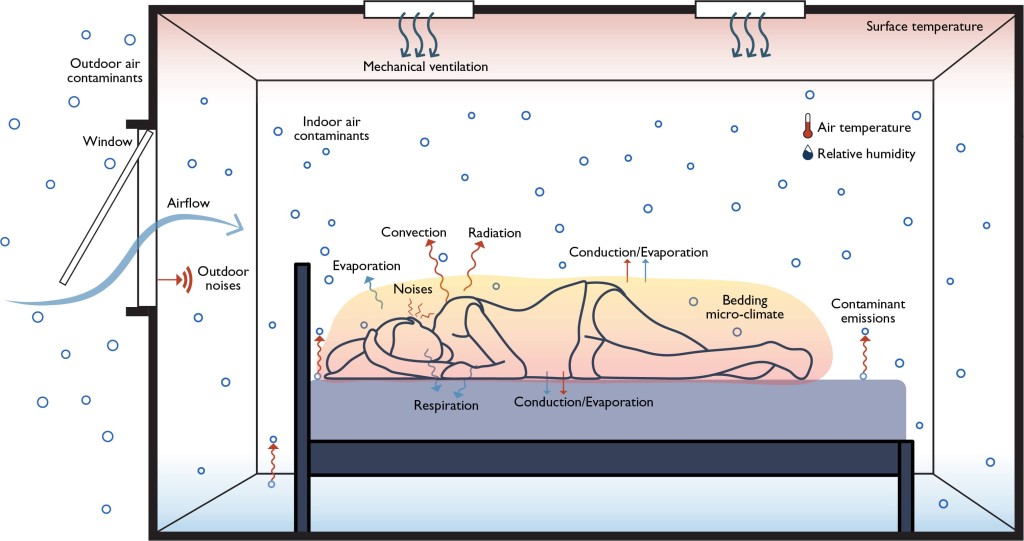
Recent consensus reports that the ideal amount of sleep required each night for children and adults are 8-12 hours and 7-9 hours, respectively. Up to 50% of children experience a sleep problem and approximately 30% of adults complain of sleep disruption. Environmental sleep disrupters such as temperature, humidity, light, ambient noise, and air quality are recognized as contributors to sleep disorders. However, there are some unsolved questions in the building standards and design guidelines regarding the design and operation of an environment conducive to sleep. In addition, there are few resources available to architects and engineers providing explicit guidance on the necessary characteristics for the design of an optimal sleep environment, especially for children. Specifically, it has not been well-defined how the environmental parameters potentially affect children sleep quality and how to utilize available demographic, environmental, physiological, and polysomnographic parameters to optimize current sleep environment design. Therefore, this project aims to examine the effects of thermal, ambient, luminous, and acoustic environments on children’s sleep quality in mechanically ventilated study rooms.
PI: Nan Ma
Research Team: Ignacio E. Tapia (CHOP), Ruth M. Bradford (CHOP), Mary Anne Cornaglia (CHOP), Ariel I. Williamson (CHOP), William W. Braham (Penn Architecture), Dorit Aviv (Penn Architecture), Holly W. Samuelson (Harvard GSD), Rui Xiao (Penn Medicine)
